Article's Content
Almost 60% of the total US workforce now work from home part-time or full-time. That’s a whopping 159% growth in 12 years.
While it’s great to see many companies adopting the remote and hybrid work model, these models aren’t without challenges. Communication is one of these challenges.
For example, one can misinterpret an email, slack message, or comment in Google Docs. You can also lose connection during a meeting, or miss meetings due to time zone differences. Watching the replay can feel like extra work. If you have questions, your teammates might be slow to provide answers as fast as you need them. And let’s not forget the unpleasant Zoom fatigue.
These drawbacks can be super frustrating and time-consuming. You spend too much time trying to get clearer information to make better decisions. That’s why Loom is such a breath of fresh air for remote and hybrid teams.
NOTE: We’re big fans of Loom at Foundation and use it for 40-50% of all our internal communication.
In the work world where notifications and meetings can be overwhelming, Loom brings speed and clarity to every interaction.
From team alignment to sales prospecting and more, Loom’s use cases are endless. Currently, Loom is valued at $1.5 billion, quadrupling its valuation after its $130 million Series C funding round. Like Webflow, Loom didn’t smell like a billion dollars in the beginning. Its founders had maxed-out credit cards and limited time to turn things around. So how did they grow to become a unicorn and a verb in less than ten years?
Loom leveraged a product-led go-to-market strategy to achieve its success.
If you’re a SaaS founder or marketer looking to land your first set of users, or you want to expand your product offerings and attract more users, you’ll love today’s essay.
We’ll explore:
- Loom’s Initial Product-led Growth Strategy (PLG)
- How Loom Turned Early Users Into Evangelists
- Its Billion-dollar Shift From PLG to a Product-led GTM Model
- How to Create a Product-led GTM Strategy for Your Product
- What Loom Can Do Better
All you need now is some hot chocolate or your favorite beverage. Grab a cup and let’s dive right in.
“I read every issue of the Foundation newsletter. The breakdowns are outstanding.”
– Brian Dean, Founder of Backlinko (acquired by SEMRush)
Loom’s Initial Product-led Growth (PLG) Strategy
Wes Bush defines product-led growth (PLG) as a business strategy that relies on using your product as the main vehicle to acquire, activate, and retain customers.
Instead of relying on the marketing and sales team to drive demand and revenue, you rely on your product to generate both.
That means a prospect doesn’t have to consume multiple blog posts or an ebook that details the perks of async video messaging. Instead, the prospect gets to see Loom in action before deciding if the tool is the right solution.
PLG is such a great strategy for SaaS companies because it reduces the sales cycle. Prospects want to go beyond becoming problem- and solution-awareness. They want to self-educate and experience the product themselves. You increase your chances of converting them into freemium users and paying customers with the PLG model.
Loom used the PLG strategy to kickstart its journey to attracting and converting 14 million users at 200,000 organizations in 2015:
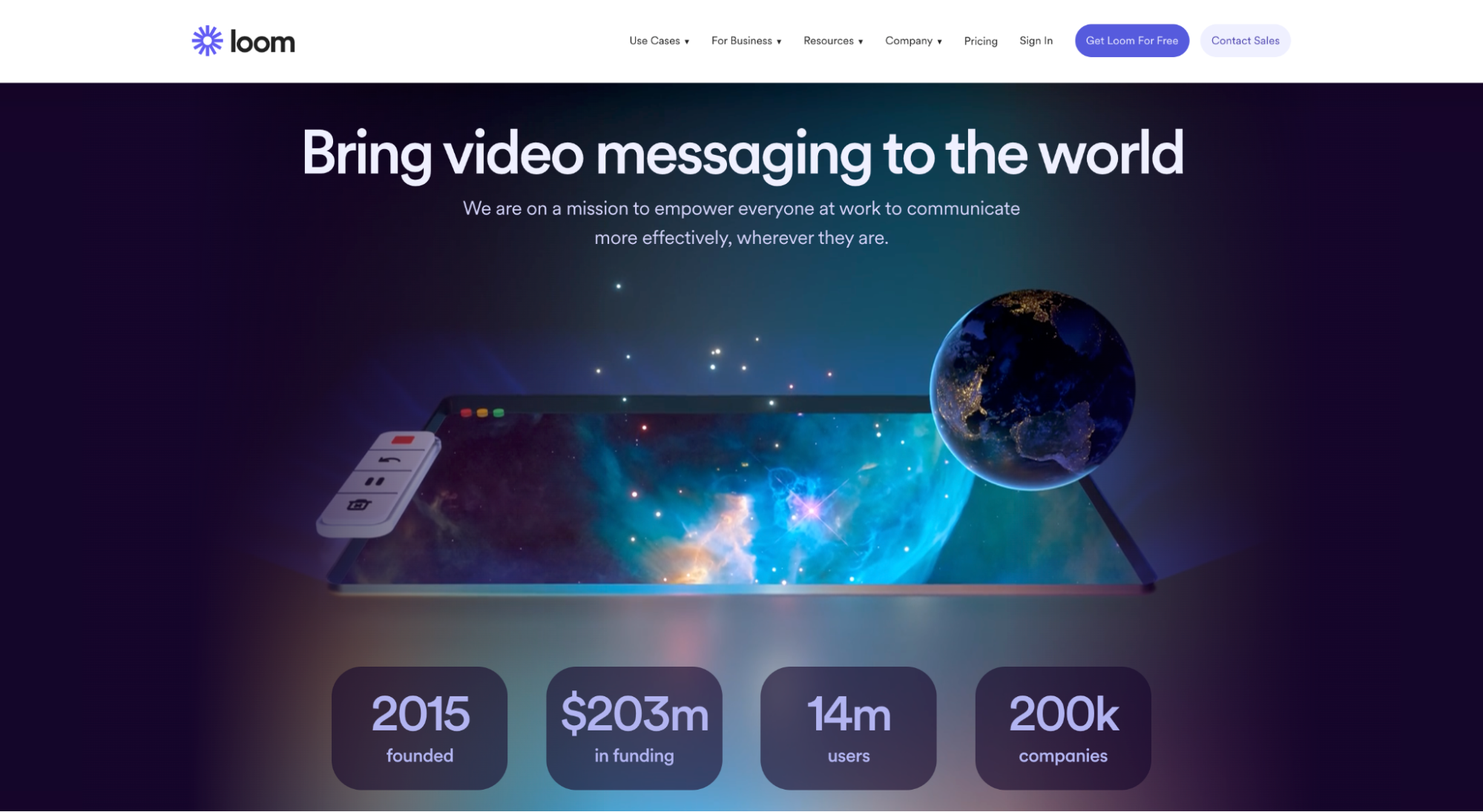

It all started with Opentest.
Cofounders Vinay Hiremath, Shahed Khan, and Joe Thomas spent eight months building the product. The chrome extension was supposed to help teams gather user feedback via video. Unfortunately, the product didn’t gain enough traction. As a result, the team struggled to raise funds to keep building and iterating.
In June 2016, the team repurposed OpenTest’s video feature into Openvid, and they launched the video recorder as an experiment on Product Hunt:
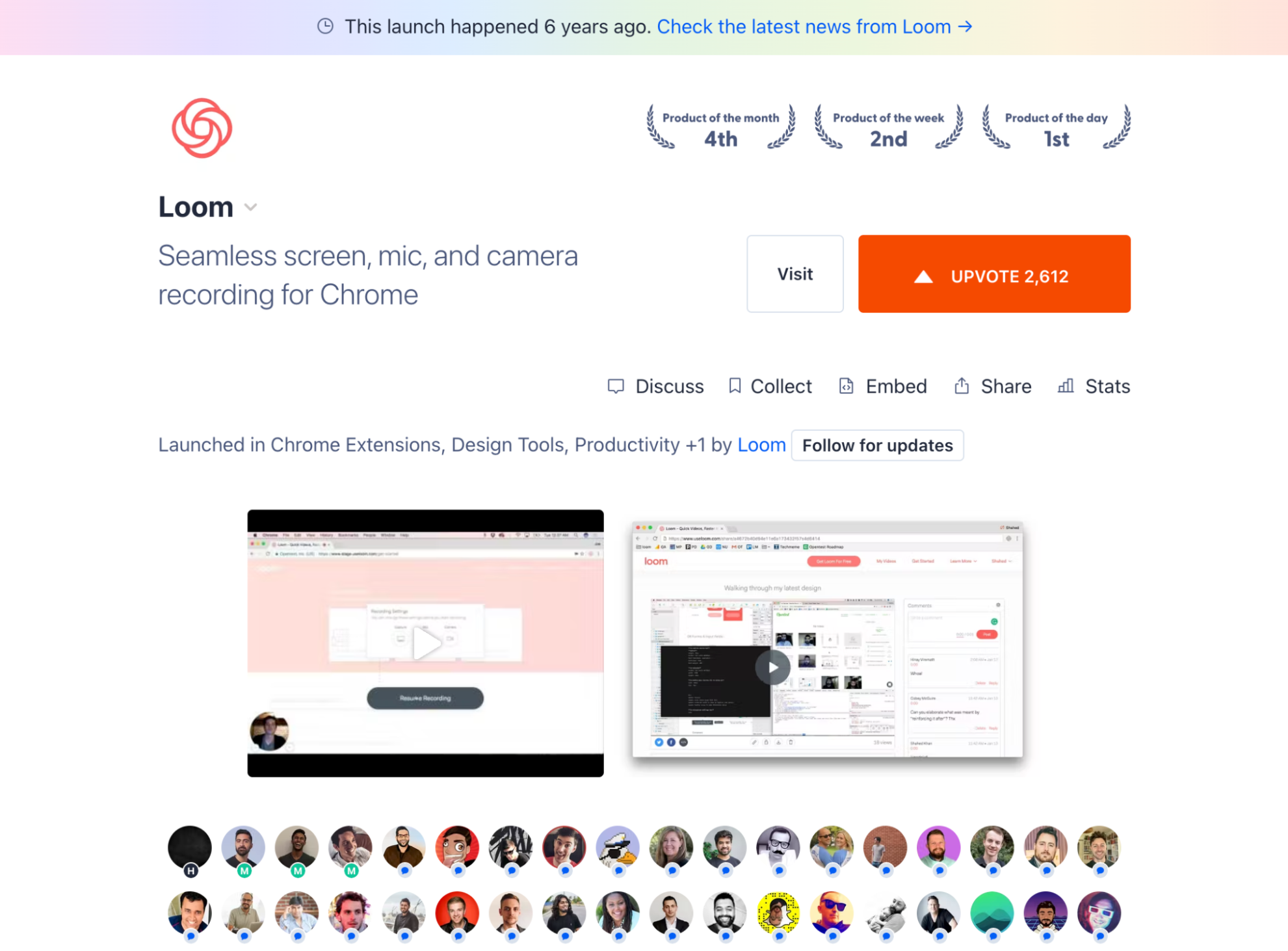

It was a free chrome extension that allowed users to record and share videos via a link. The product performed pretty well, generating thousands of signups less than two weeks after launch. By building a product and allowing prospects to experience it, Loom took its first steps toward viral success.
Loom fulfilled the first critical guiding principle for a successful product-led growth strategy. That’s fast or instant time to value. Prospects experienced immediate value within the first few minutes of using Loom. The comments from these users say it all:
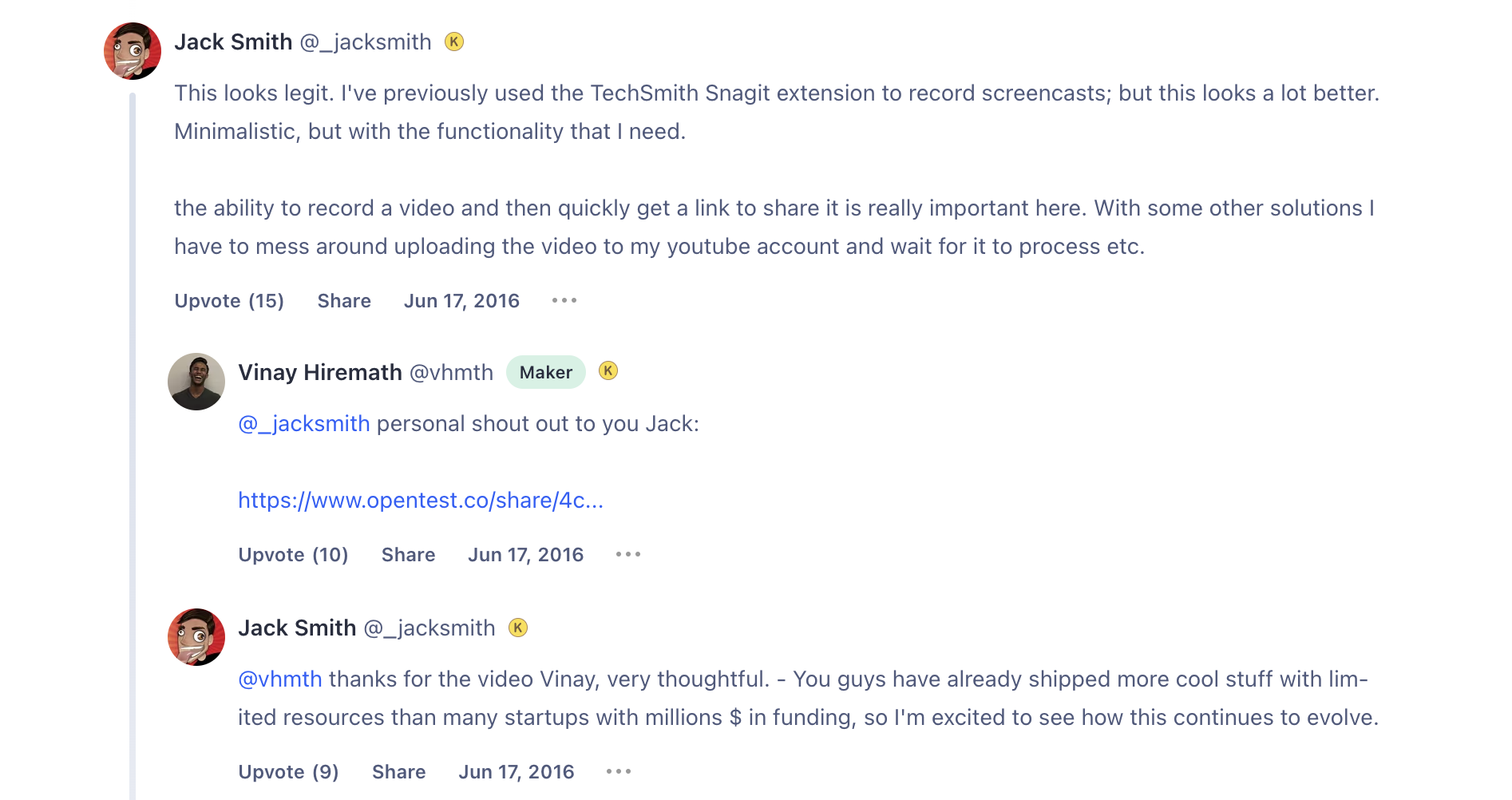



When prospects have a eureka moment with your product, it means they see some value in the first few minutes of using your product. Prospects should be able to access your product without making any commitments, such as inserting their credit card details before they can experience your product.
The first few minutes of interaction prospects have with your solution is crucial. You want to use these minutes to build trust by giving them instant value. If they love their first interaction with your product, you’ll have won their initial trust.
But gaining initial trust alone is not enough to generate buzz. You need loyal users to become evangelists who spread the word about your product to their network. To earn their loyalty, you have to show them how much you care about their needs.
How Loom Turned Early Users Into Evangelists
One lesson you can learn from Loom’s initial strategy is its customer obsession. They showed users how much they cared about satisfying their needs.
Rather than model competitors while building and shipping features, Loom zeroed in on the users’ needs. It adopted a customer-obsessed approach to earn user loyalty. The team learned from users by asking and listening intently for user feedback and feature requests.
Vinay and his co-founders built and shipped features every day. They prioritized the most requested features users and the team would find relevant. The features also had to fall within Loom’s scope—improving Loom extension and website products.
From user feedback, Loom learned video could solve team communication issues, especially for remote teams. So in 2017, the tool was rebranded from Openvid to Loom. The tool was positioned as the go-to solution to replace the hassles of written communication. By 2019, Loom had released an all-encompassing application for Mac and PC, with editing and storage capabilities.
Some of the features that changed the game for Loom in its early days include:
1. Notifying users when someone watches their video:
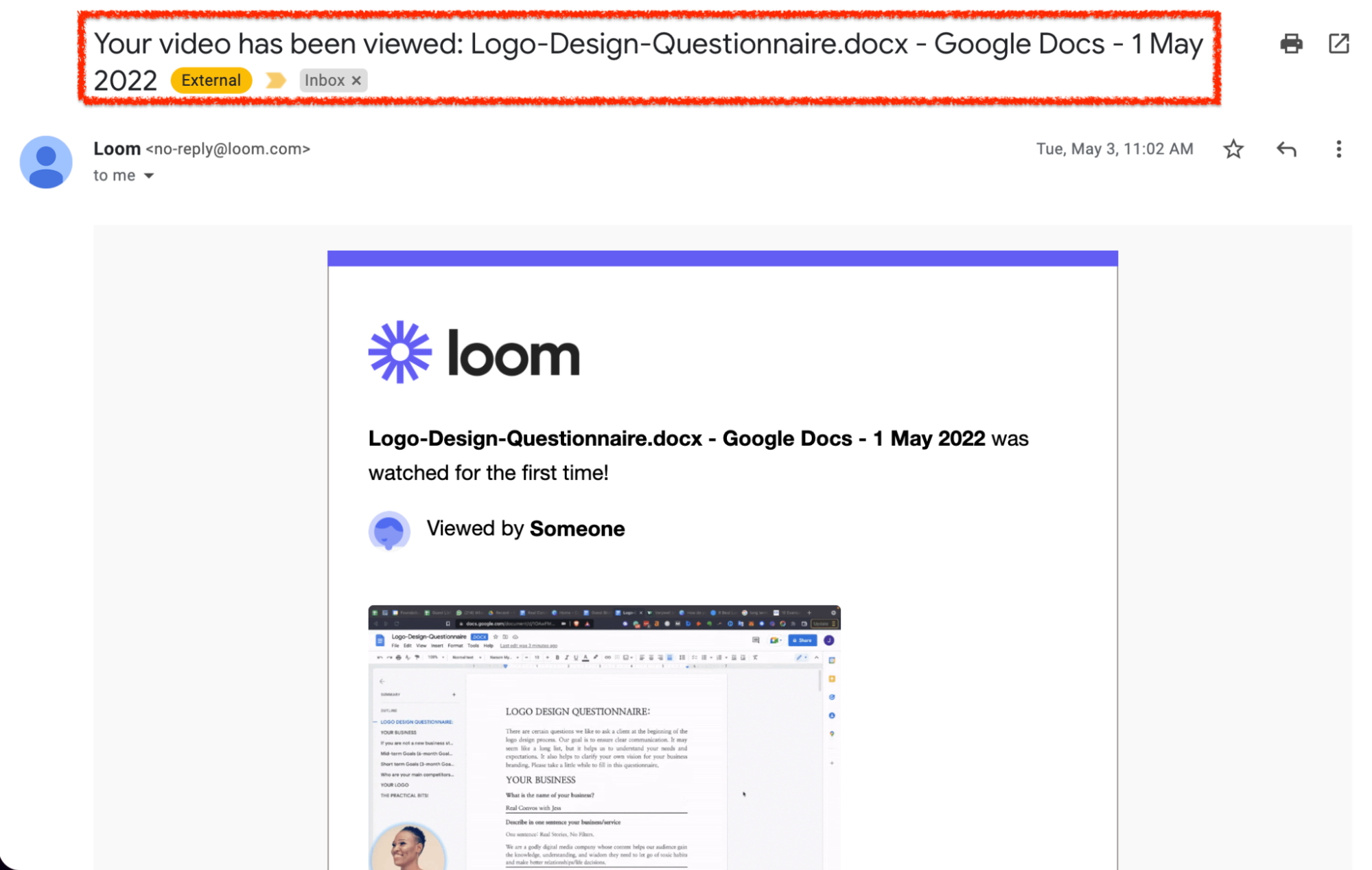

2. Allowing users to record their entire desktop
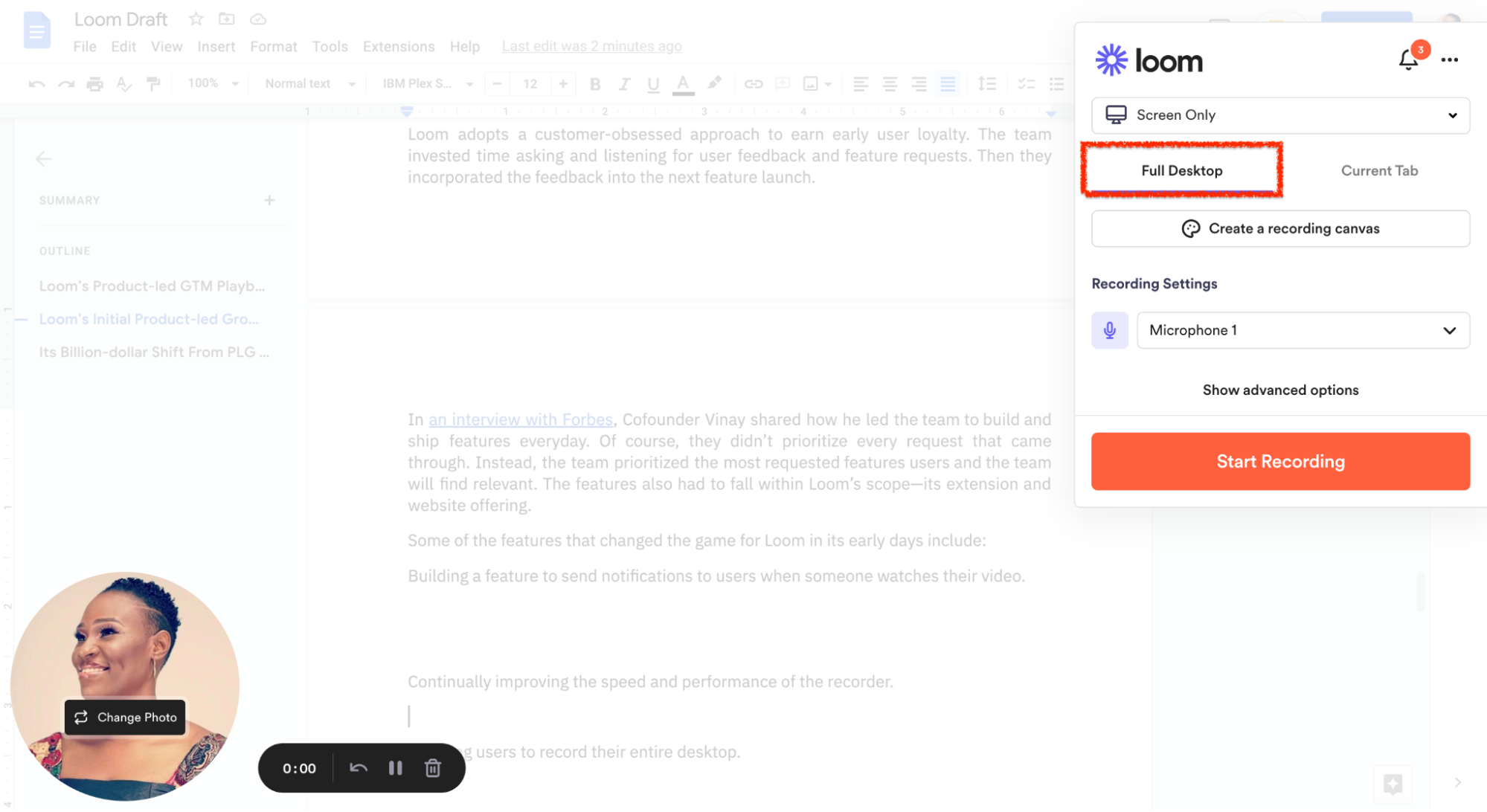

Loom also invested resources into improving its recorder’s speed and performance. To date, Loom still takes feature requests pretty seriously. Like Salesforce’s IdeaExchange, Loom has a dedicated landing page for collecting feature ideas to improve its product roadmap:
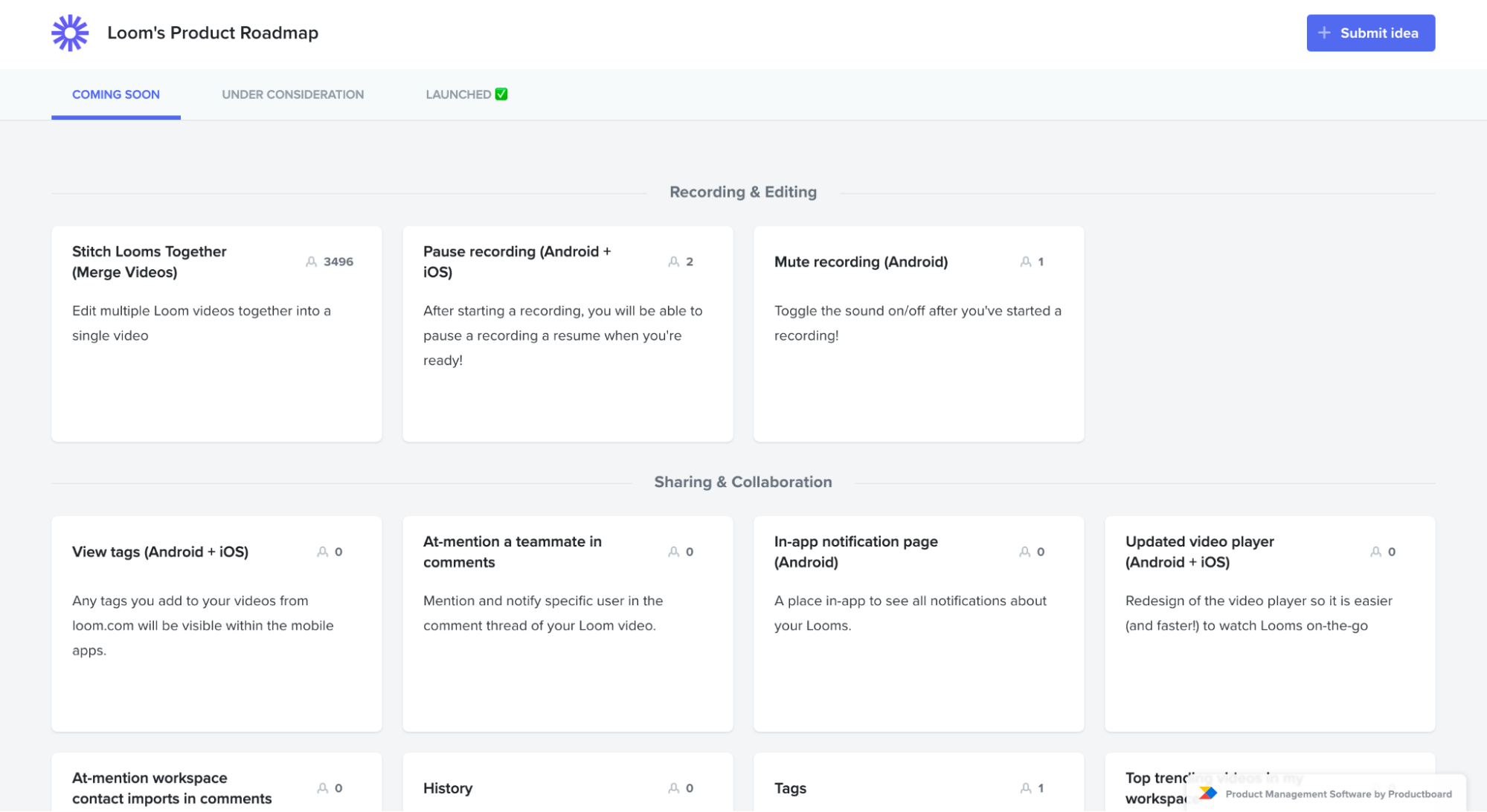

Notice how they show users and contributors where they are with each feature request. The “coming soon”, “under consideration”, and “launched” tab is such a great way of making users feel included in the development process.
Apart from submitting a request via the landing page, the Loom team occasionally asks for user feedback via email:
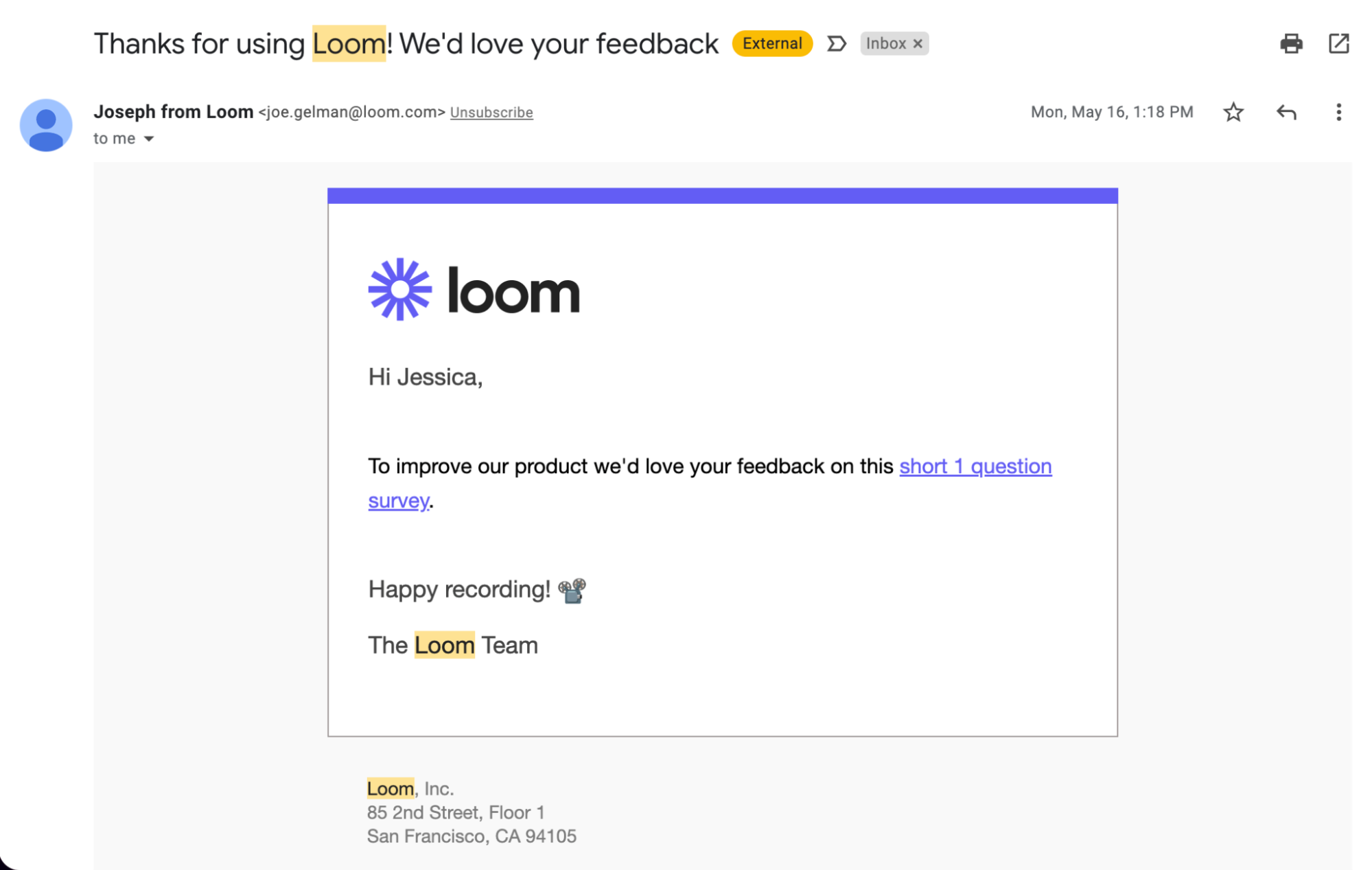

And they notify users via email when a new feature is shipped:
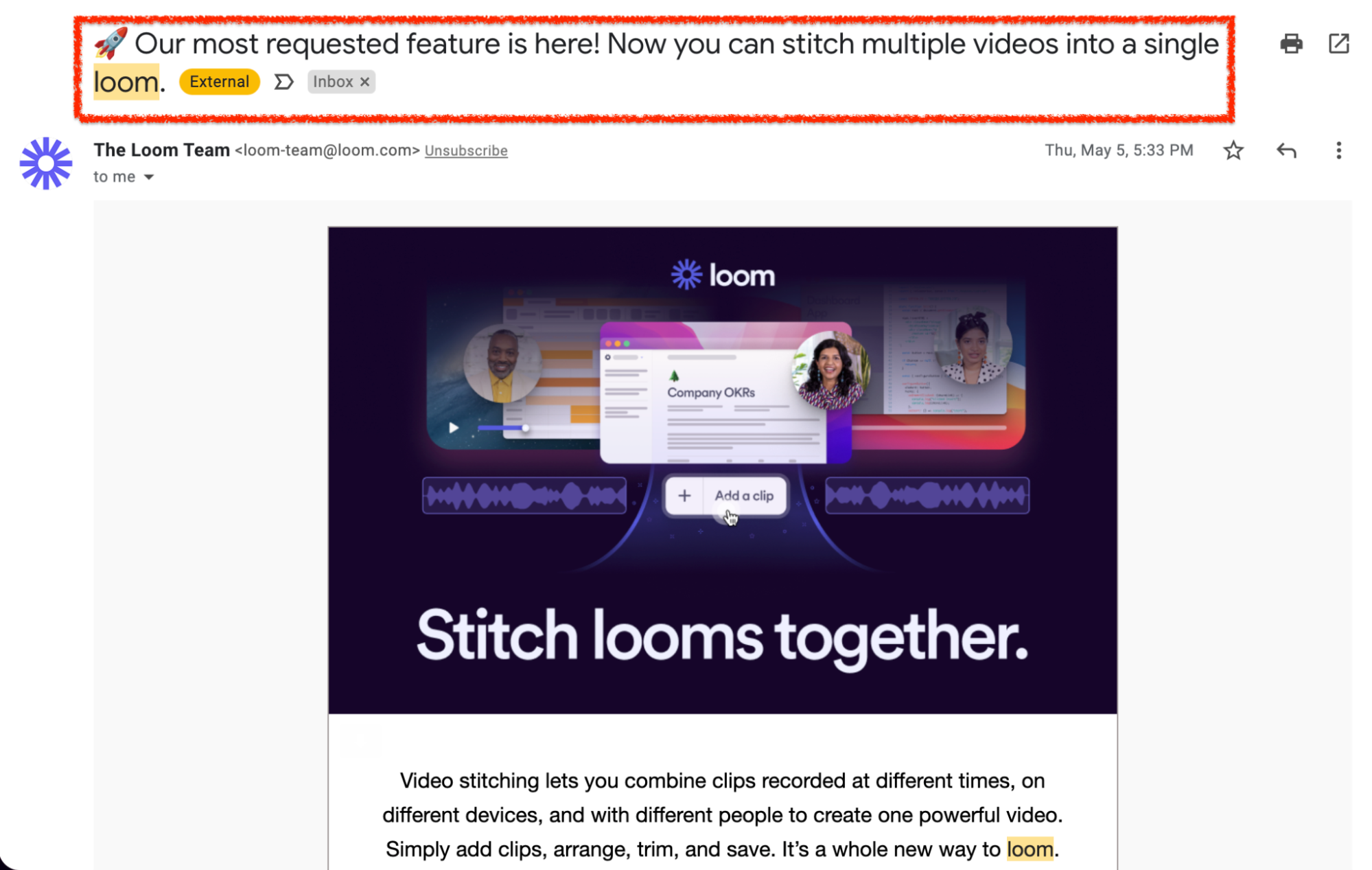

Using phrasing like “our most requested feature is here” shows users how seriously Loom takes their feedback. Loom’s customer-obsessed culture is one of the reasons why its product receives so much love from the industry. No wonder its tool is Loom’s most effective marketing channel, generating almost 80% of its web traffic:
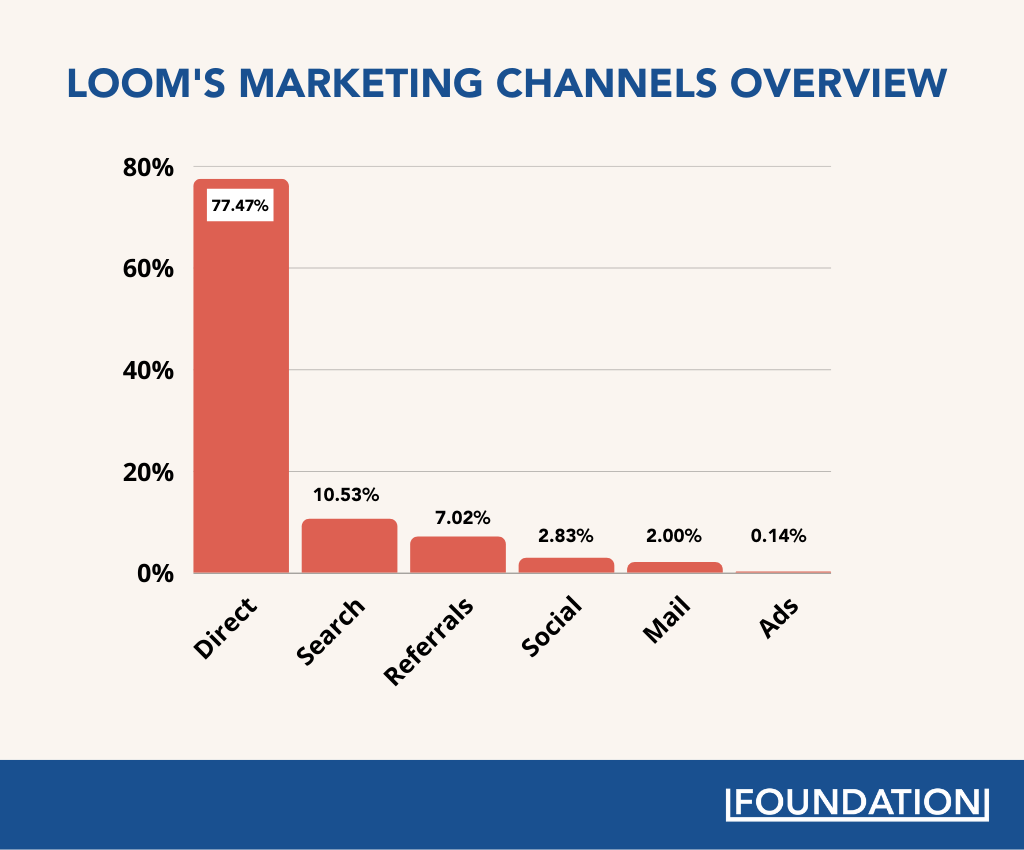

Prioritizing relevant users’ feedback and feature requests is a great way to win their loyalty. Users want to feel like they are a part of something bigger than themselves. If they see how their feedback helps to make your product successful, they’ll keep giving.
User feedback is also the best way to build a product that scales over time. You build features that reflect the voice of the customer, not just insights from competitor research. It’s great to check out the competition. However, becoming competitor-obsessed isn’t as rewarding as being customer-obsessed.
You should prioritize the voice of the customer in all you do. Collaborate with experts on your team to determine the market value of feature requests, and build features that will move the needle, just like Loom.
Loom’s strategy pivoted somewhere in 2020. Let’s see how the shift resulted in the successes we see and celebrate today.
“If you do not subscribe to Foundation’s newsletter, you are missing out on a content marketing GOLDMINE. Definite must-read.”
– Rachael Hensley, Director of PR and Comms at Shippo
Its Billion-dollar Shift From PLG to a Product-led GTM Model
A product-led go-to-market strategy (PLGTM) helps SaaS companies define their product’s ideal users, organize their messaging, and position the product for launch, expansion, or rebranding.
The purpose of this strategy is to keep cross-functional teams aligned so you can determine what the market really needs and iterate your product successfully.
Usually, B2B SaaS companies only need a go-to-market for one of these three reasons:
- Launching a new product in a market that already exists
- Expanding an existing product to launch in a relatively new market
- Testing a new product in a relatively new market for growth
With the go-to-market strategy, you can get the info you need to create a product that satisfies user intent and outperforms competitors. In other words, gathering relevant user insights will save you money and time, and focus your efforts to get the most results.
After running on a PLG model for the first four years, Loom pivoted to a product-led GTM strategy. Loom had one goal this time: attract the biggest brands in the world to adopt its tool for internal communication.
Before 2020, Loom was positioned as a “free screen & video recording software”.


Even though teams used the software to communicate and collaborate, the home page copy positioned Loom as a tool anyone could use to quickly record video feedback and share it with a link. Typical use cases included customer support, user feedback, product demo walkthroughs, and more.
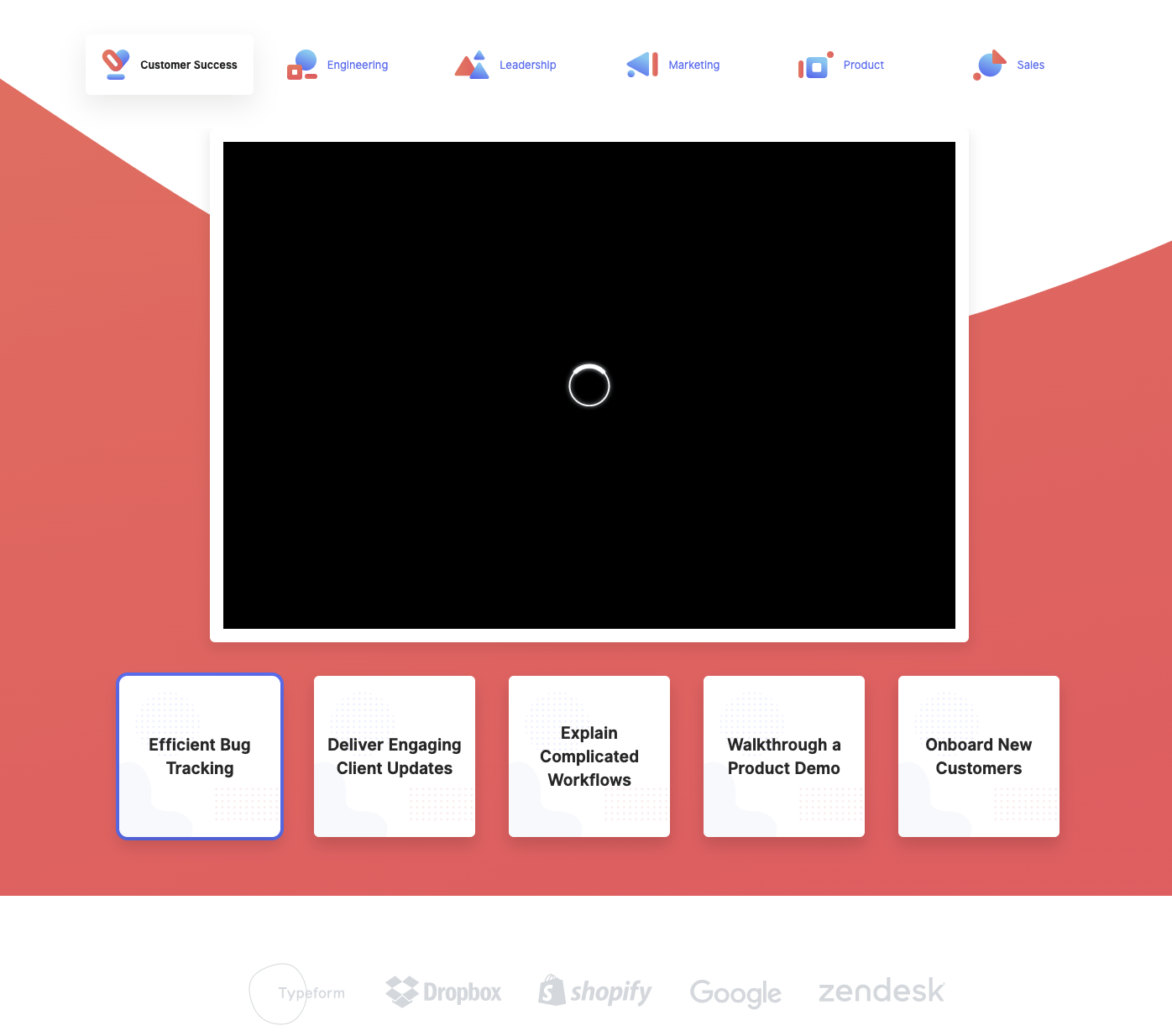

Like Slack, Loom’s GTM strategy was simple: launch an existing product (Loom) in a relatively new market (business and enterprise teams). Led by its VP of Marketing, Matt Hodges, Loom created a GTM strategy to support its existing product strategy.
First, the team changed the company’s messaging from “free screen & video recording software” to “video messaging for work”. The landing page copy also changed. The hero section was “video recording simplified”. But the new hero section became “say it with video”:


With the new messaging, a prospect can tell Loom is a better way to communicate their message to teammates than a simple video recording tool.
Apart from the messaging and market positioning, Loom released the beta version of Loom for teams in May 2020—at the peak of the pandemic.


The new offering included a centralized video library for teams to collaborate, share, and watch videos in one place. Users could also include call-to-actions, attach files, archive videos, password-protect videos, and more.
The launch couldn’t have come at a better time.
Many companies were already looking for ways to improve team communications. The central video library gave brands a way to align new hires and improve team collaboration and communication. The asynchronous video messaging platform also offered strict security measures to safeguard these company assets.
Eventually, Loom’s user base grew to 4 million users from 90,000 companies, including leading brands like Slack and LinkedIn:
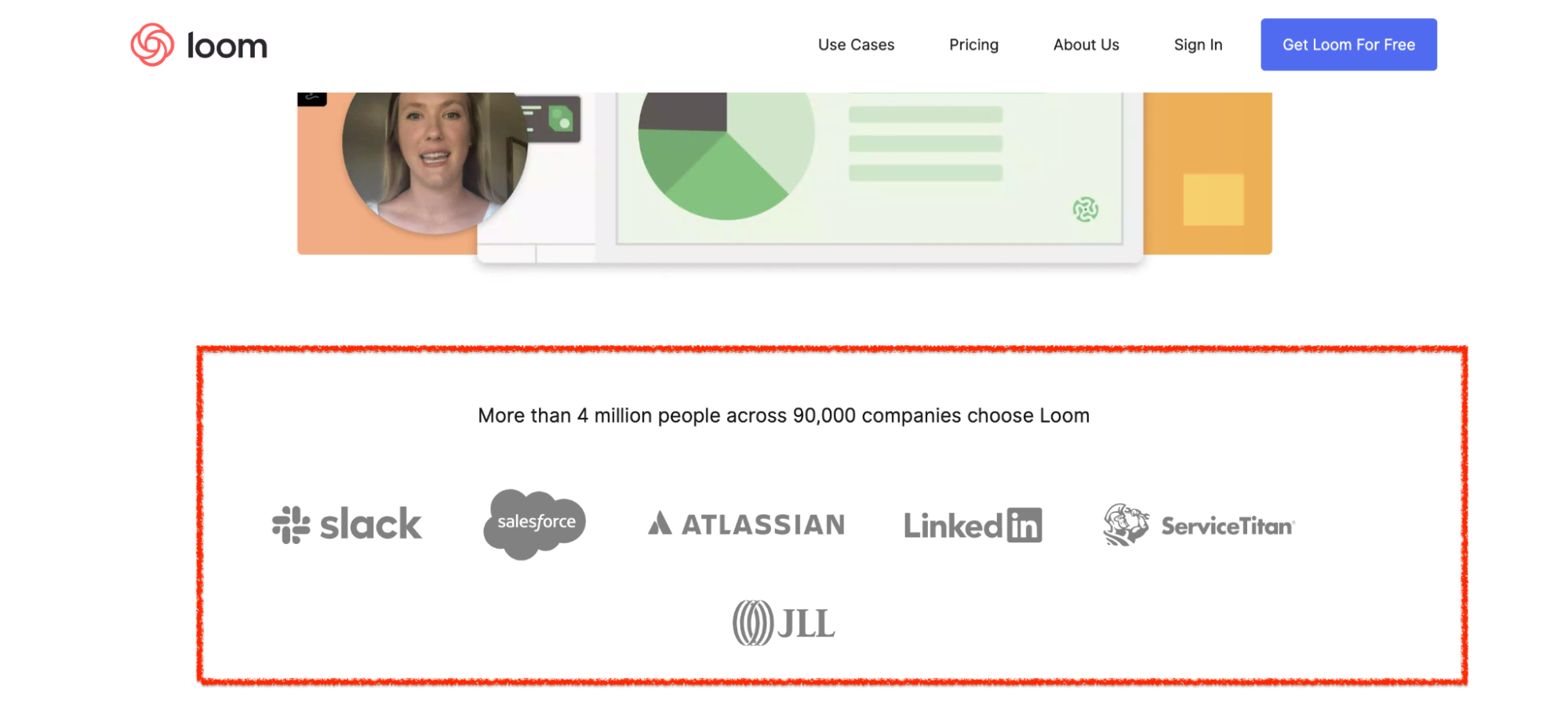

Since then, Loom has grown to reach more than 14 million people from 200,000 companies in two years. Its use cases have also grown to include:
- Investors using the platform to give feedback to startup founders
- Educators using the platform to teach students
- Companies using the platform to keep teams aligned and more
Loom has also modified its messaging from “video messaging for work” to “async video messaging for work” to better reflect their value proposition. Loom even has a different hero section on its homepage that tells its story better:
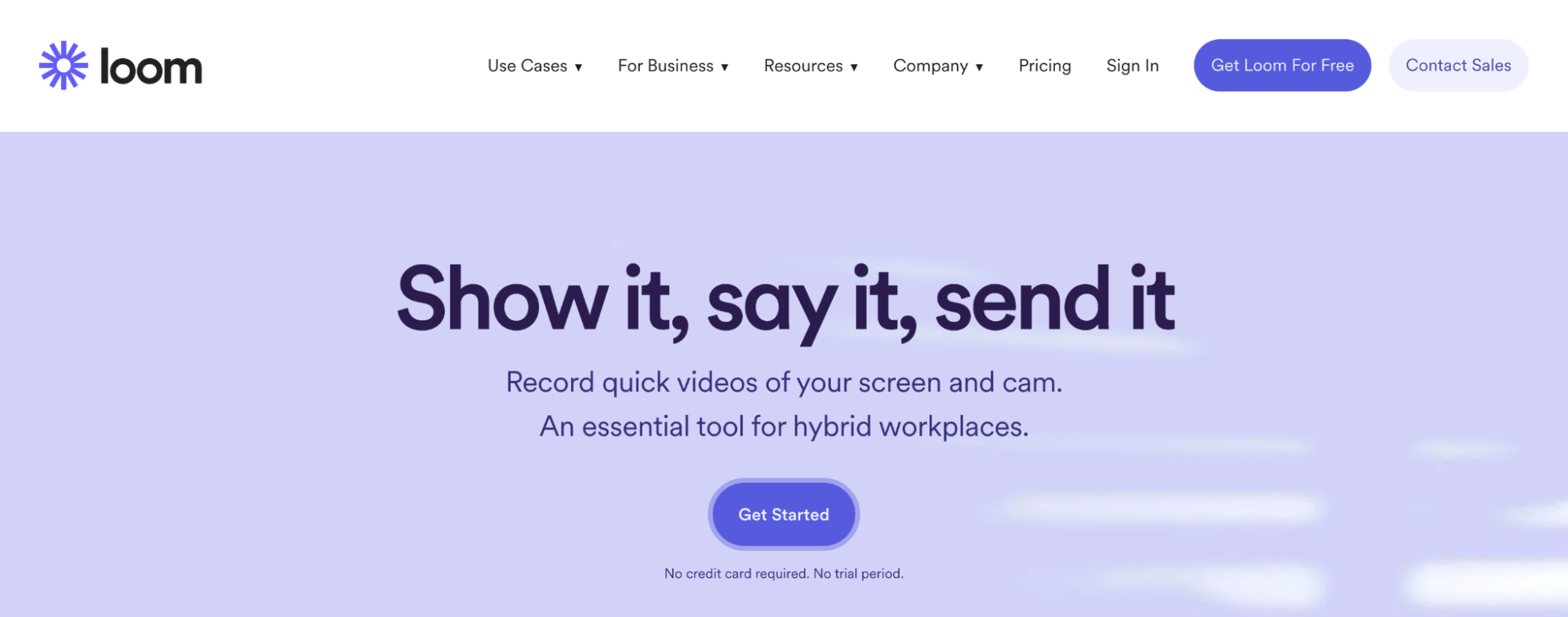

Remote and hybrid companies can tell Loom is an essential tool they need to add to their tech stack. At Foundation, we rely on Loom to talk through written feedback, explain complex concepts, onboard new hires, and for all async comms. It’s an integral part of our remote async culture. That’s how valuable we and 200,000 other companies find the tool.
If you’re looking to create a product-led GTM strategy for your SaaS product, you can use some tactics from Loom’s playbook.
Here are some things you can use to get started:
- Define your ideal customer personas.
- Research your competitors to see what they are already doing and how you can improve on their strategies.
- Craft your product’s key messaging to reflect its value proposition.
- Launch a beta version of your product, gather user feedback, and iterate based on the most relevant, requested feedback.
- Invest in creating use cases that make it easy for prospects to visualize how your product solves their problem.
- Define a pricing strategy for your product.
- Send out periodic surveys to users to assess their satisfaction and to identify growth opportunities for your product.
- Be transparent about feature development. Let users know where you are with the features they requested.
“A newsletter that I read every single time when it hits my inbox! It’s full of deep analysis for B2B marketers, with hands-on case studies of how the most successful SaaS companies and marketplaces conquered their SEO niche.”
– Lars Kamp, CEO, Some Engineering Inc.
What Loom Can Do Better: Invest In Content Marketing
Loom is doing pretty great, no doubt.
I particularly love how they create dedicated landing pages for each use case. It shows prospects the different ways they can solve their problem with Loom.
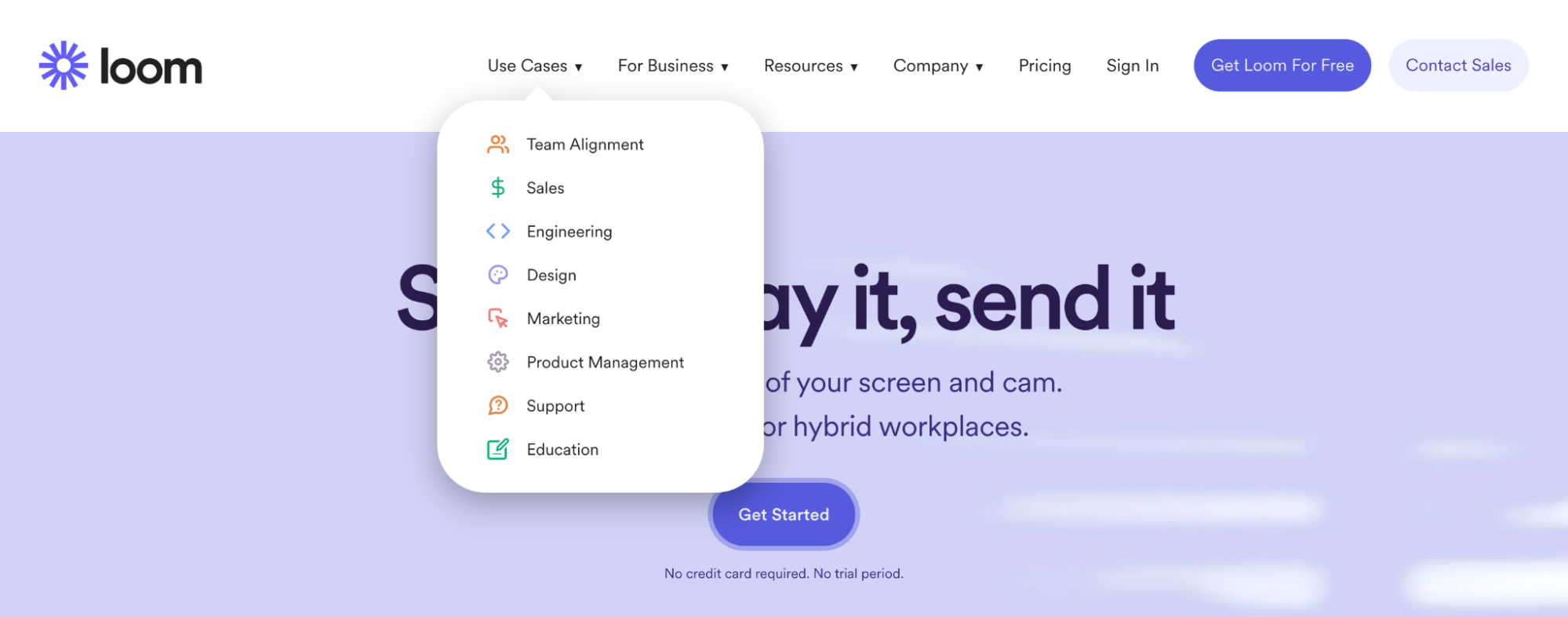

Even though each of these landing pages has details that can guide prospects, I believe Loom can do a better job of building authority around each use case.
Take the Team Alignment use case for example:
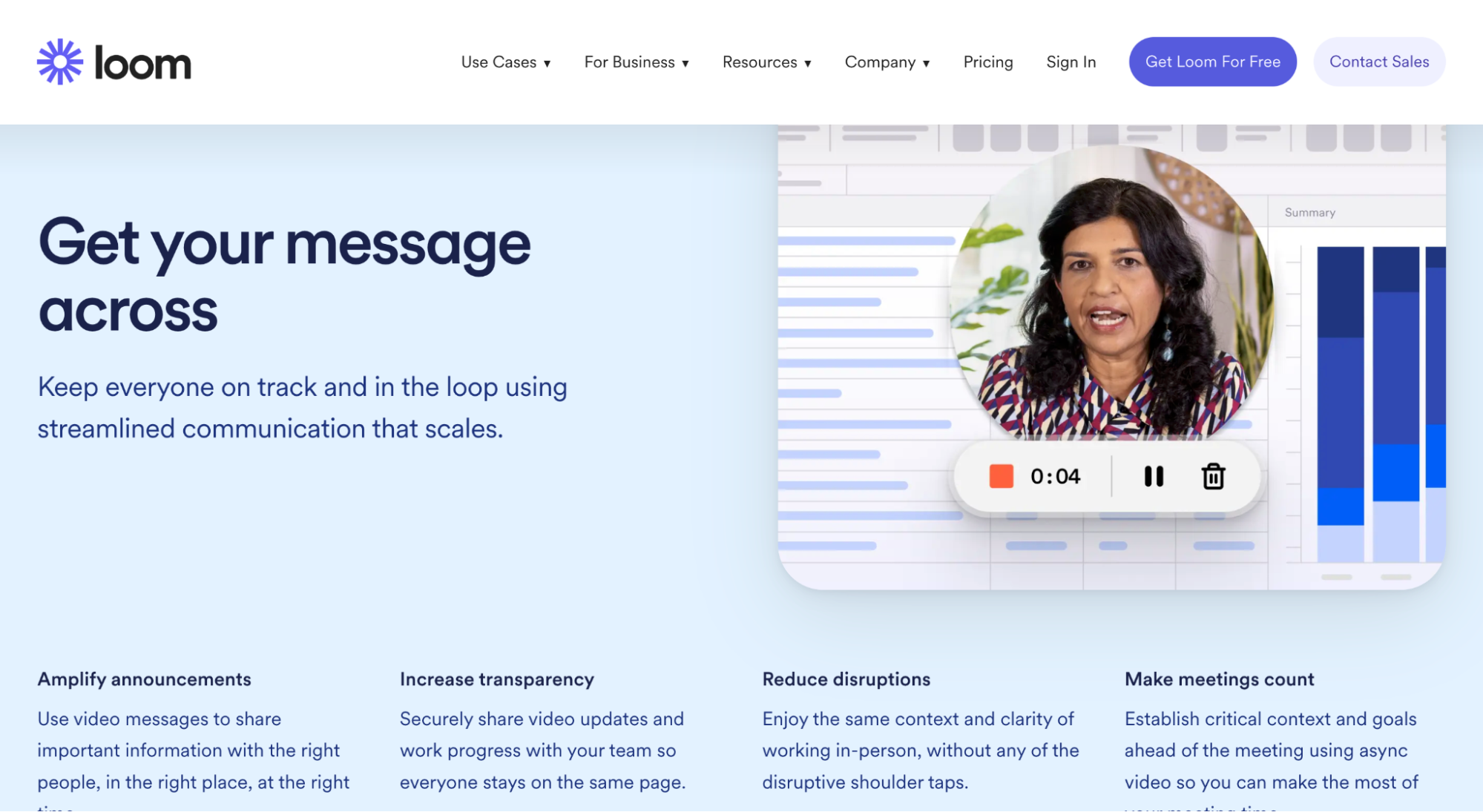

Beyond showcasing the benefits of the tool for team alignment, Loom can create a cluster of topics around each use case.
NerdWallet uses this strategy to create content pieces that capture demand for its product. Over 80% of their overall traffic comes from organic search. Webflow also uses this strategy to amplify and align its value with the buyer’s intent. Webflow’s blog accounts for more than 21% of its organic traffic revenue. That’s almost $460K.
Loom can take a page out of NerdWallet’s and Webflow’s playbook to create content around the team alignment.
Right now, team alignment is a low competition keyword with 1400 monthly searches/month globally. Loom can invest in creating content around this keyword. The team can create content that guides remote and hybrid teams on how they can align their teams better using Loom. Some content ideas include:
- How to Boost Team Alignment and Performance: A Guide for Hybrid Teams
- Is Your Remote Team Aligned?: X Ways to Tell
- How to Keep Your Hybrid Team Aligned
- X Ways to Boost Transparency for Hybrid Teams
Notice how these topics are directly related to the use case in question. Loom can use these topics to dominate the SERPs and satisfy users via organic search. Most of all, they can link top blog posts to the team alignment use case landing page. NerdWallet does this on each use case (or categories as they call it) landing page.
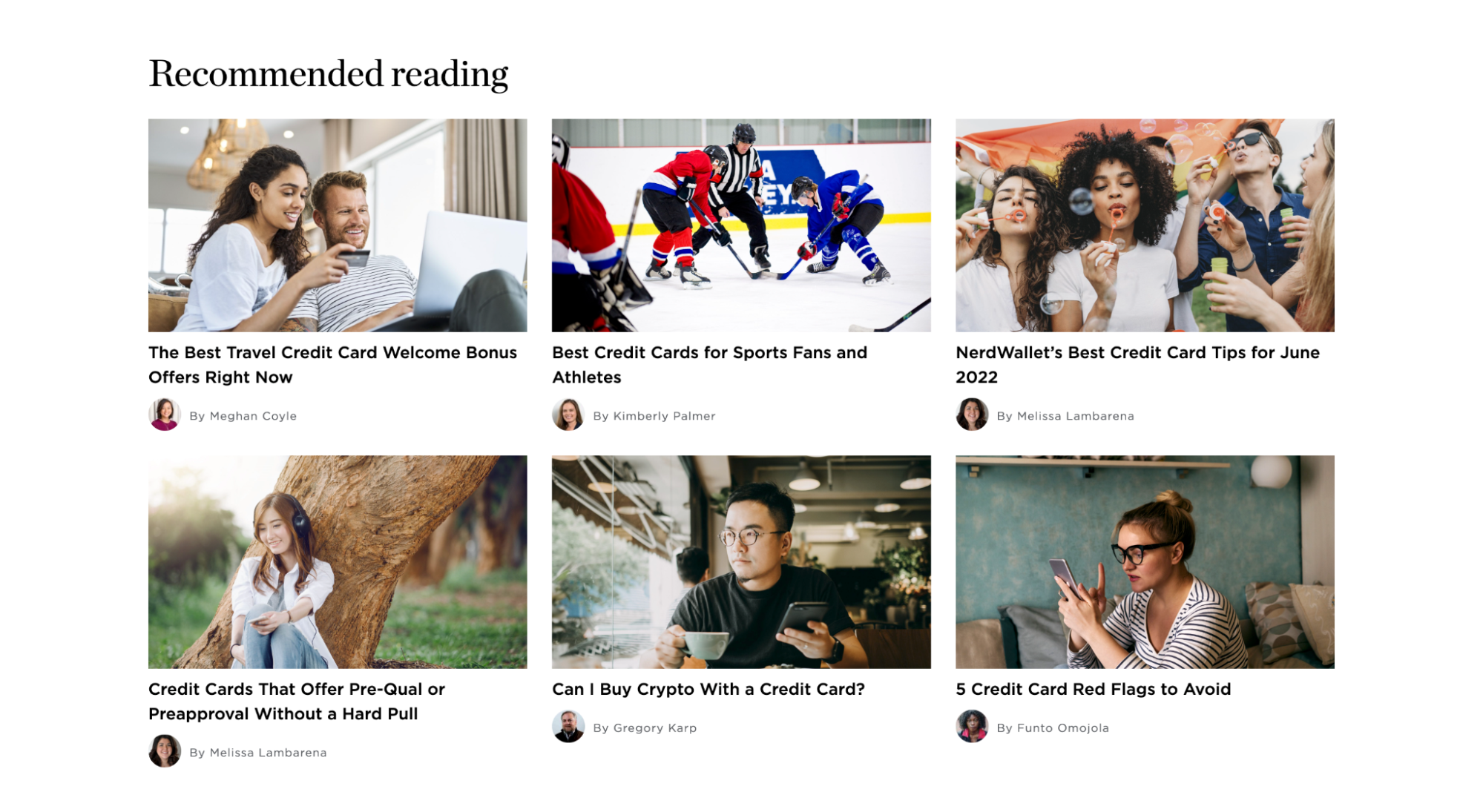

Loom can replicate this strategy across different use cases, creating a blend of thought leadership, SEO-focused articles, and case studies to satisfy search intent. This will help them establish authority as the go-to resource hub for all things remote and hybrid work video communication.
Wrap Up
So there you have it: the product-led GTM strategy Loom used to reach a $1 billion valuation.
In addition to a great freemium product, the company prioritized gathering user feedback and iterating the product based on relevant feedback. This helped inspire trust, establish credibility, and win users’ loyalty. Loom’s customer-obsessed culture and well-executed PLGTM strategy in 2020 resulted in 14 million people from 200,000 companies trusting the brand.
You can get similar results by taking several pages from Loom’s playbook. Actively seek customer feedback. Sort through and act on relevant feedback. Send out periodic surveys to users to assess their satisfaction, and to identify growth opportunities for your product.
Be transparent about feature development. Let users know where you are with the features they requested. You’ll see the results start to trickle in, in no time.
Stay up to date with all of our latest findings by subscribing to our newsletter today. Signing up also gives you early access to Ross’ Tuesday essay full of exclusive industry insights.
Quick, do it now before the next drop!







